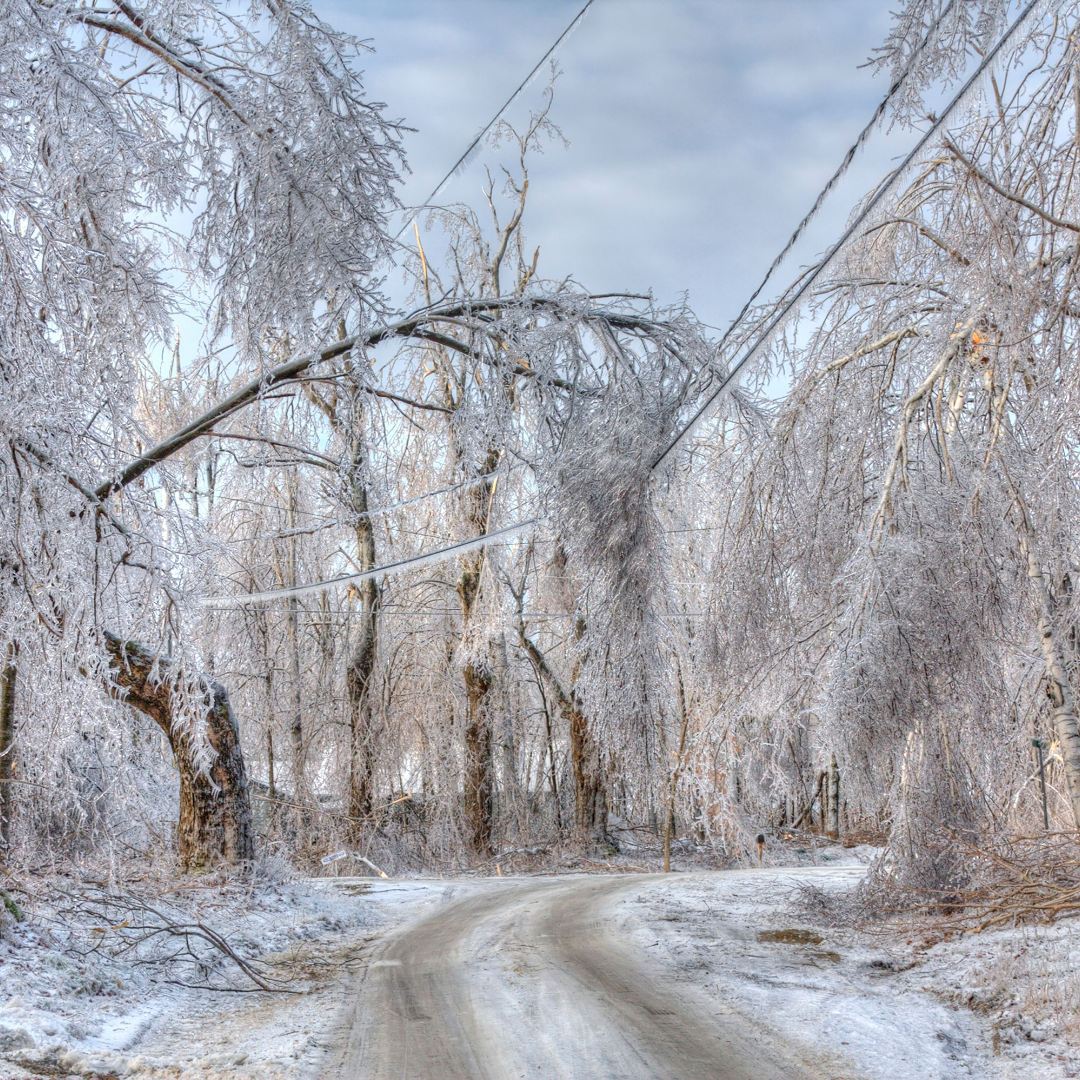Winter Storms

The National Weather Service defines a winter storm as a combination of heavy snow, blowing snow and/or dangerous wind chills. An ice storm as a storm which results in the accumulation of at least 0.25-inches of ice on exposed surfaces. Ice storms occur when cold air at the surface is overridden by warm, moist air. As the warm air advances and is lifted over the cold air, precipitation begins falling as rain, cools is it passes through the cold air mass below, and freezes upon contact with chilled surfaces at temperatures of 32°F or below.
Snowfall is precipitation that falls in the form of ice crystals and accumulates on contact with surfaces below 32°F. Snow is formed from moisture that freezes while still in the cloud, then falls through layers of below freezing temperatures.
What is a Severe Winter Storm?
The NOAA National Severe Storms Laboratory defines a winter storm as an event in which the main types of precipitation are snow, sleet or freezing rain.
Why can winter storms be so dangerous?
Most deaths from winter storms are not directly related to the storm itself.
- People die in traffic accidents on icy roads.
- People die of heart attacks while shoveling snow.
- People die of hypothermia from prolonged exposure to cold.
Everyone is potentially at risk during winter storms. The actual threat to you depends on your specific situation. Recent observations show that:
- Of injuries related to ice and snow:
- About 70% occur in automobiles.
- About 25% are people caught out in the storm.
- Majority are males over 40 years old.
- Of injuries related to exposure to cold:
- 50% are people over 60 years old.
- Over 75% are males.
- About 20% occur in the home.
Types of Winter Storm Alerts:
Winter Storm Warning: Issued when a combination of hazardous winter weather in the form of heavy snow, heavy freezing rain, or heavy sleet is imminent or occurring. Winter Storm Warnings are usually issued 12 to 24 hours before the event is expected to begin.
Winter Storm Watch: Issued 12-48 hours in advance of the onset of severe winter conditions. The watch may or may not be upgraded to a winter storm warning, depending on how the weather system moves or how it is developing.
Winter Storm Outlook: Issued prior to a Winter Storm Watch. The Outlook is given when forecasters believe winter storm conditions are possible and are usually issued 3 to 5 days in advance of a winter storm.
Winter Weather Advisories: Issued for accumulations of snow, freezing rain, freezing drizzle, and sleet which will cause significant inconveniences and, if caution is not exercised, could lead to life-threatening situations.
Frost/Freeze Warning: Below freezing temperatures are expected and may cause significant damage to plants, crops, or fruit trees. People who have homes without heat need to take added precautions.